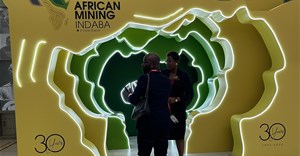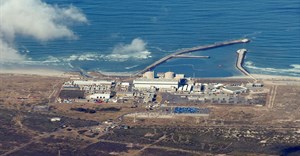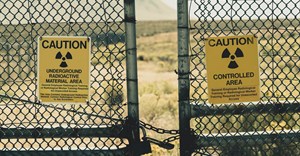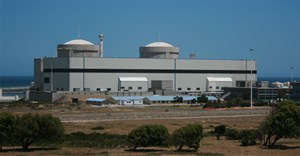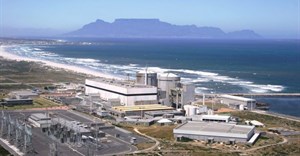
Subscribe & Follow
New nuclear energy to come on stream by 2037

There has been a significant reduction in installed capacity from coal compared with the 2011 integrated resource plan, although coal and nuclear energy will contribute most of the energy mix by 2050.
Department of Energy deputy director-general Jacob Mbele said at a media briefing on Tuesday, 22 November, that the nuclear energy supply would be commissioned and already in the system by 2037, with 1,000MW of hydro energy coming in about 2030.
A price of $5.4m per megawatt of nuclear energy has been used for the scenario planning.
Eskom head of generation Matshela Koko said that, assuming nuclear capacity of 20,000MW was built between 2025 and 2037, this would require a 10-year lead time for construction. So Eskom would continue with its request for proposals for a nuclear procurement this year to test the market.
He emphasised that testing the market was not the same as entering a contract.
Depending on the schedule for the retirement of Eskom plants, new coal baseload would be commissioned by 2028.
Mbele said that in terms of the draft plan, 20GW of new nuclear capacity would be installed by 2050, between 35GW and 40GW of gas, 15GW of coal and 55GW of wind and solar energy.
Initial new capacity would come from solar, wind and gas, with the new capacity coming in at the earliest 2022.
The department's deputy director-general, Ompi Aphane, said no big capacity installation was needed before 2022 but thereafter demand would escalate sharply.
Energy Minister Tina Joemat-Pettersson announced the government's revised draft integrated resource plan and the draft integrated energy plan at the media briefing.
Together, the draft plans project future energy demand, the supply capacity that needs to be created to provide for this demand, and the desired energy mix to make up the supply.
The 2011 integrated resource plan envisages the share of nuclear rising from 5% to 20% in 2030; coal declining from 90% to 65%, renewables rising from 0% to 9% and hydro remaining at 5%.
The draft plans - which will be released for public comment - are the first to be adopted by the Cabinet, despite the requirement that they be updated annually.
The draft plans were approved by the Cabinet about three weeks ago and are different from those submitted by the department as other departments and cabinets later suggested amendments.
In terms of the draft integrated resource plan, an average annual increase in electricity demand is estimated at 2.17% for a high level of energy intensity and at 1.31% for a low level of energy intensity.
The department's model assumes a moderate plant performance by Eskom.
The public will also be asked to comment on other scenarios that ought to be considered. The department anticipates the IRP to be finalised by mid-2017.
Speaking during a media briefing on the two plans, Joemat-Pettersson said the department had completed two of the four key milestones on the development of the integrated resource plan.
These were the settling of key assumptions and the development of a base case.
The third milestone is modelling and analysing scenarios and sensitivies, a process the minister said was currently under way.
All this information will be drawn together to develop a final plan taking into account the various scenarios and policy positions.
Joemat-Pettersson said the IRP and the IEP "aims to balance similar objectives which are: security of supply, cost of electricity, job creation and localisation, minimal negative environmental impact, minimal water usage, to diversity of supply sources (the energy mix) and promotion of energy access".
The minister said a draft framework was being drawn up that would explore possible options for the development of a gas market.
Source: Business Day
Source: I-Net Bridge

For more than two decades, I-Net Bridge has been one of South Africa’s preferred electronic providers of innovative solutions, data of the highest calibre, reliable platforms and excellent supporting systems. Our products include workstations, web applications and data feeds packaged with in-depth news and powerful analytical tools empowering clients to make meaningful decisions.
We pride ourselves on our wide variety of in-house skills, encompassing multiple platforms and applications. These skills enable us to not only function as a first class facility, but also design, implement and support all our client needs at a level that confirms I-Net Bridge a leader in its field.
Go to: http://www.inet.co.za








